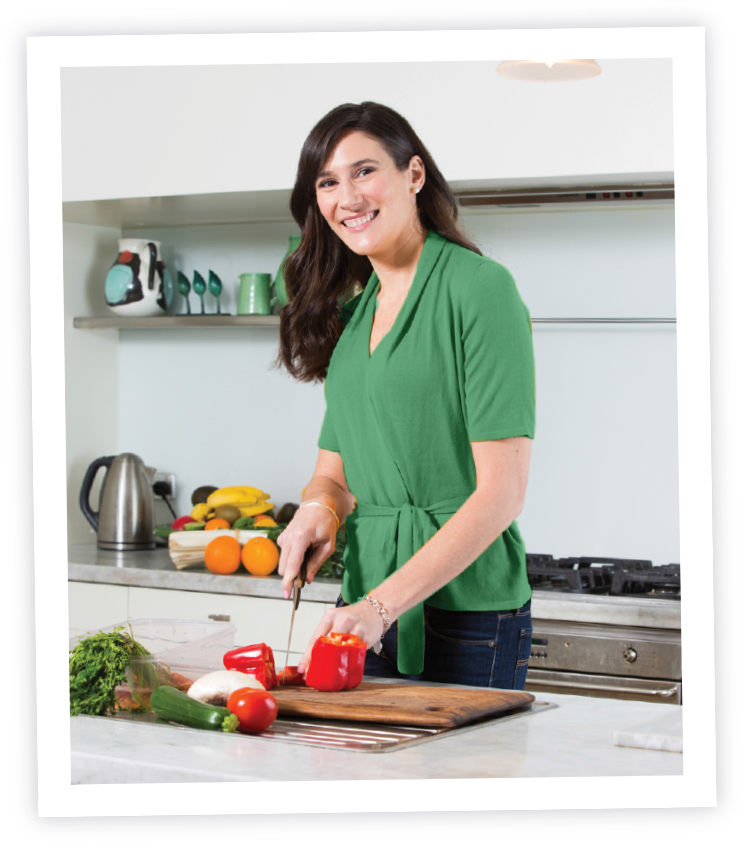If you’ve been diagnosed with ovarian hyperstimulation syndrome, also known as OHSS, you’re probably feeling sick and bloated, and wondering what you can eat. In this blog, I discuss what Ovarian Hyperstimulation Syndrome is, how you get it and what you can eat to help.
What is Ovarian hyperstimulation syndrome?
Ovarian hyperstimulation syndrome, or OHSS, is caused by taking injectable hormone medications to stimulate the development of eggs in your ovaries. It can cause rapid weight gain, abdominal pain, vomiting and shortness of breath.
The majority of women diagnosed with OHSS will experience a mild form of the syndrome, which usually resolves within 2 weeks. In about 20% of women, the abdominal discomfort associated with OHSS can be quite uncomfortable and take up to a month to resolve.
In about 2% of women, the symptoms may become so severe, hospitalisation is necessary.
It’s important to note that Ovarian Hyperstimulation Syndrome is just that – a SYNDROME. That means that it’s a collection of symptoms, and the symptoms, and therefore the treatment will be slightly different for everyone. Most of your symptoms will be treated by your doctor with medications, but there are a few dietary interventions that may be needed.
Adjust your fluid intake
Most women will just have some nausea and bloating for a few days. Treat it like morning sickness. Drink plenty of water. If you are nauseas or vomiting, just like when you have morning sickness, ginger can help. Grate it and add it to a stir fry or fruit juice. Try to eat small, regular, nutritious, low-fat, carbohydrate-rich snacks throughout the day, such as toast with vegemite, slices of peeled apple, chicken soup, unbuttered popcorn or plain rice.
If your condition is worse and you have vomiting and fluid build up, the main dietary intervention is to adjust your fluid intake. I know that it’s confusing, but depending upon your symptoms, you may either need to increase your fluid intake OR reduce it. You see, if you’re vomiting a lot, you may be losing a lot of fluids and need to replace them, but if you are really fluid overloaded, meaning that your body isn’t processing fluids properly, you may need to restrict your fluid intake. This is why it’s extremely important to get personalised advice for your condition.
If you’ve been told to increase your fluid intake sports drinks and soups are often a good option. Try to take small sips regularly, rather than just gulping down fluids a couple of times per day. Most women will need to aim for approximately three litres per day, but you may need more than this. Again, ask your health care professional.
If you need to restrict your fluids, remember that foods that are solid at room temperature, but turn into fluid in your mouth, are also considered fluids….so that includes foods like jelly and ice cream. Again, your doctor should tell you how much you need to restrict your fluid intake to, but most commonly it’s a one litre of fluids per day. It can be a good idea to fill up one bottle of water to the amount of fluid that you’re allowed, and sip that slowly throughout the day, so that you know exactly how much fluid you have left for the day. Sucking on ice chips or eating fresh fruit or vegies can also be helpful if your mouth is feeling dry.
Low salt diet
The second most common dietary modification is a low salt diet. Again, not everyone needs this, because you may be losing a lot of salt if you’re vomiting a lot, but if you are very fluid overloaded, your doctors may want you to do this to help your body get rid of some fluid. This is because fluid clings to salt like a koala clings to a tree.
If you’re following a low salt, also known as a low sodium diet, you obviously need to avoid adding salt to meals…..but in addition to that, you also need to start reading food labels. Look at the one hundred gram column and look for foods that contain less than one hundred and twenty milligrams of sodium.
The best advice when it comes to OHSS is to listen to your treating team, and if you need more assistance, get personalised advice from a prenatal dietitian. My team and I do consult women with this condition, so reach out to us if you need more help.
2 Comments

Get nutritious recipes
straight into your inbox!
Send your details now to receive Melanie’s recipes designed around a range of dietary needs including improved fertility, weight loss, general heath and wellbeing through improved nutrition. Receive the recipes specific to your needs.
As seen in







Hello. I am from Iran.
I became ohss after the embryo transfer. There was about 800cc of fluid in my abdomen.
I was admitted and the fluid was drained through the vagina.
But it still exists or has increased again. (According to ultrasound)
I can no longer eat a protein-rich diet like egg whites and meat. In addition, the albumin level was sufficient and I did not need to inject.
What to do? I can not eat anything anymore.
I’m experiencing ohss from taking fostimon in treating infertility. I am not given any medication from my doctor to stop it except pain killers. What can I do again